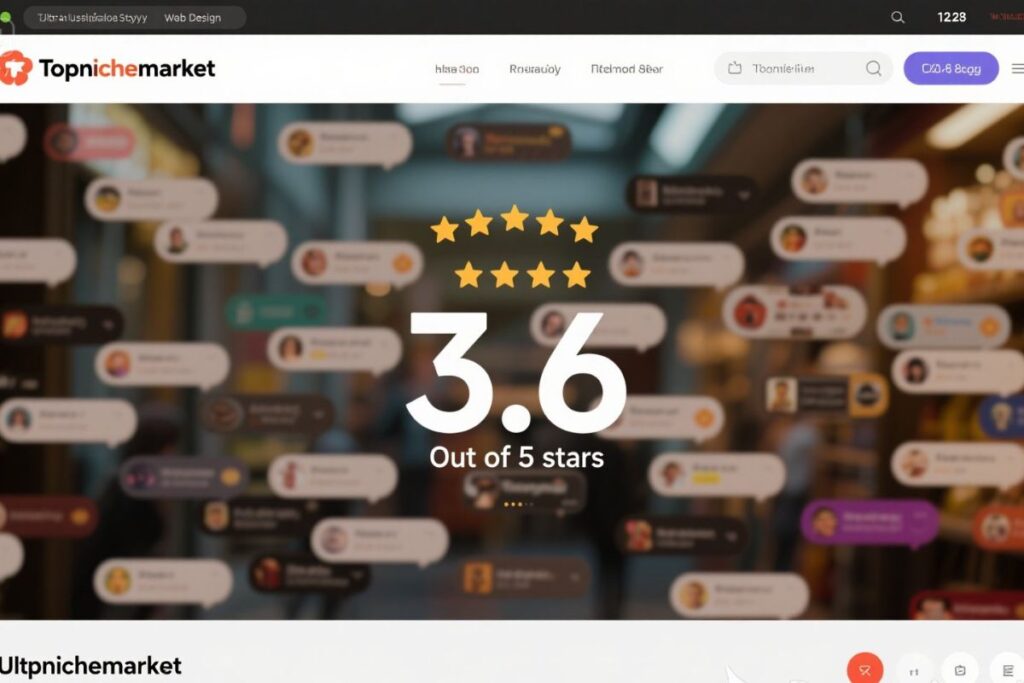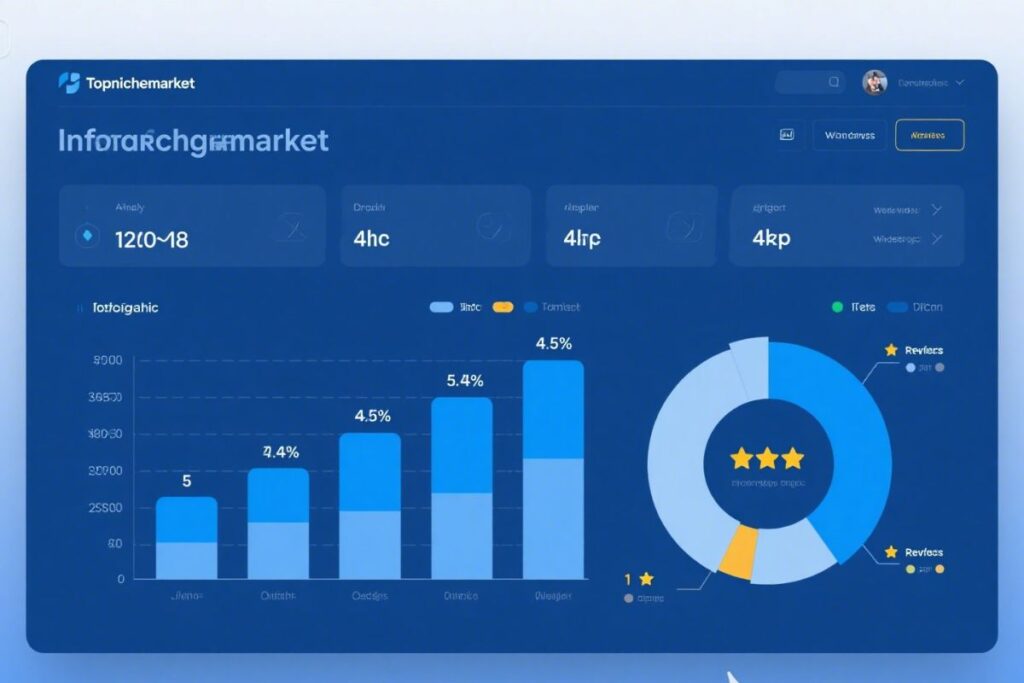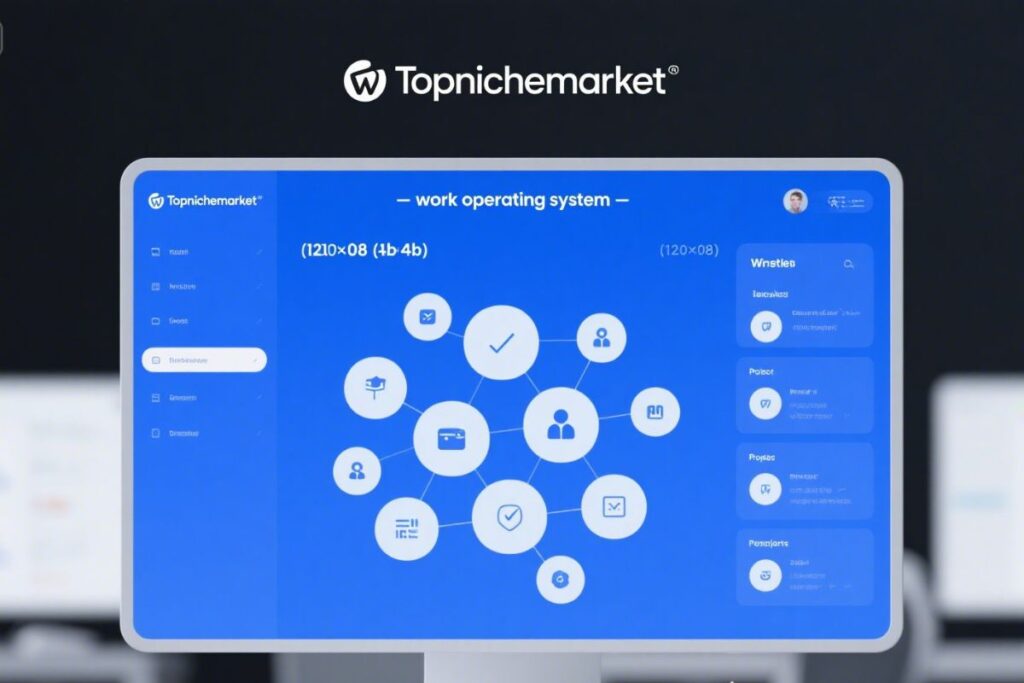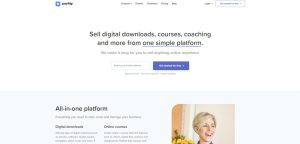Table of Contents
Togglemonday.com Reviews: Bad Support, Bugs, Or More?

monday.com Reviews Bad Support, Bugs, Or More
Considering monday.com for your team’s workflow needs? Making a smart move involves thorough research! In today’s competitive landscape of project management and collaboration tools, selecting the platform that aligns best with your team’s needs is paramount. The right choice significantly impacts productivity, streamlines communication, and can even boost team morale. While marketing materials often present an idealized vision of a product, the most valuable insights typically come from the experiences of individuals who use the software daily. This is precisely where online reviews become an indispensable resource for potential users navigating their options.
Platforms like Trustpilot function as essential digital spaces where customers candidly share their honest experiences, offering a blend of positive feedback, constructive criticism, and sometimes frustrating encounters. These platforms provide a vital window into the practical realities of using a service, extending beyond the polished demonstrations presented by companies. Understanding the collective sentiment from real users is crucial for making an informed decision.
This article aims to be more than just another product overview. Our objective is to present an in-depth analysis derived exclusively from the collective voice of monday.com users who have shared their experiences on Trustpilot. We have carefully examined the feedback provided in your outline to offer a transparent view of what customers are genuinely saying about monday.com in 2025. By focusing specifically on these monday.com reviews, our goal is to assist you in your decision-making process by providing insights grounded in actual user experiences. We will explore the overall sentiment reflected in the feedback, break down the common themes identified in both positive and negative experiences, examine how monday.com describes itself based on its Trustpilot listing, and finally, synthesize this information into a clear summary of reported pros and cons. Join us as we go beyond the marketing rhetoric to explore the authentic monday.com reviews left by its user base.
Decoding monday.com: What the Company Says It Is (According to Trustpilot Details)
Before we delve into the direct user feedback, it is helpful to establish a foundational understanding of how monday.com presents itself, based on the details provided on its Trustpilot listing. This perspective from the company itself is essential for comparing it against the real-world user experiences detailed in the monday.com reviews that follow. Understanding the company’s own claims provides context for evaluating whether the platform lives up to its promises in the eyes of its users.
According to the description available on their Trustpilot page, monday.com positions itself not merely as a task management application, but rather as a comprehensive “work operating system.” This deliberate positioning suggests a platform designed to act as the central hub for managing nearly every type of work or project within an organization. Their stated mission is quite ambitious: they aim to make collaboration enjoyable and straightforward (“fun and easy”), to help teams concentrate on their most important objectives, and ultimately, to empower them to achieve more efficiency (“get more done”).
A strong emphasis is placed on the platform’s visual design. They highlight its capability to help users “see the big picture” and reduce the necessity for traditional, often inefficient, communication methods such as excessive email chains and protracted meetings. The core promise here is enhanced clarity, improved efficiency, and a significantly more streamlined workflow for teams.
Identifying the target audience, monday.com states that its platform is built for teams of all sizes. This broad scope includes a wide range of users, from “tiny startups” just beginning their journey to “huge enterprises” grappling with complex organizational structures. Essentially, anyone with work to manage is presented as a potential user, implying a high degree of versatility and scalability within the platform’s design. This broad appeal is a key part of their market positioning.
Ease of use is another critical claim featured in their description. monday.com is described using terms like “intuitive,” “easy-to-use,” and featuring a “drag-and-drop” interface. In a digital world where software complexity can be a major barrier to adoption, these are powerful selling points. An intuitive design suggests a rapid onboarding process for new users and reduced time required for training, allowing teams to become productive quickly.
The Trustpilot listing further categorizes monday.com under several relevant headings: “Web Collaboration Platform,” “CRM Provider,” and “Software Company.” These classifications underscore the platform’s multifaceted nature, indicating its intention to serve not only general project management needs but also specific business functions like Customer Relationship Management. This broad categorization might appeal strongly to businesses seeking a single integrated tool to manage multiple operational areas, but it also raises questions about the depth and performance in each specific domain—questions that the user feedback in monday.com reviews are uniquely positioned to answer. These company claims collectively set a high standard, portraying an all-encompassing, user-friendly, and highly effective tool suitable for virtually any team. Now, let’s proceed to see how this corporate vision aligns with the collective experiences reported in the monday.com reviews shared by thousands of their users.
The Verdict from the Crowd: Summarizing monday.com’s Trustpilot Score

The Verdict from the Crowd Summarizing monday.com’s Trustpilot Score
Moving from monday.com’s self-representation to the aggregated user feedback provides a critical reality check in evaluating the platform. The Trustpilot page offers a valuable snapshot of the overall user sentiment, derived from a significant volume of public monday.com reviews. This consolidated data serves as our starting point for understanding the collective user experience and perception of the service.
Based on the information provided, monday.com has achieved an overall Trustpilot score of 3.6 out of 5 stars. This score is the result of a substantial number of user submissions—specifically, 3,312 individual monday.com reviews contributed to this analysis. This large sample size lends weight to the aggregate findings.
To gain a more detailed understanding of this score, let’s examine the distribution of these 3,312 monday.com reviews across the star ratings:
- 5-star reviews: These account for a significant majority, making up 73% of the total feedback. This indicates that a large proportion of users have had highly positive experiences with the platform.
- 4-star reviews: Representing 18% of the submissions, these reviews signal strong satisfaction. Combined with the 5-star ratings, an impressive 91% of reviewers gave monday.com either 4 or 5 stars, suggesting widespread positive sentiment among most users who left monday.com reviews.
- 3-star reviews: These constitute a mere 2%, indicating that very few users had a neutral or mixed experience significant enough to rate it in the middle.
- 2-star reviews: Account for an even smaller portion, just 1%.
- 1-star reviews: These make up 6% of the total monday.com reviews. While a considerably smaller percentage than the top ratings, this still represents a noticeable number of users who experienced significant dissatisfaction, leading to the lowest possible rating.
Upon first glance at the raw percentages, the overwhelming dominance of 4 and 5-star ratings might lead one to anticipate a much higher overall score than 3.6. The fact that the final score is closer to the midpoint of the scale suggests that the negative reviews, though fewer in quantity, highlight issues that are severe enough to considerably impact the average rating calculation. A relatively small percentage of 1-star reviews can indeed have a disproportionately large negative effect on the average score when weighed against a large percentage of 5-star reviews. This discrepancy between the percentage of positive ratings and the overall average score is a strong indicator that while many users are satisfied, a notable group encountered significant pain points that warrant closer examination. The insights contained within these lower-rated monday.com reviews are crucial for a balanced understanding.
Transparency in handling user feedback is also partially evident in the Trustpilot data. monday.com is reported to have replied to 80% of the negative reviews. This suggests an active effort, though not entirely comprehensive, to engage with users who have expressed dissatisfaction. The typical reply time is noted as being within 1 month, which, depending on the urgency or nature of the user’s issue, could be perceived as either acceptable or potentially quite slow. It’s also mentioned that they utilize AI-assist for drafting replies, a modern approach that might help manage the volume of feedback but could also raise questions about the personalization and depth of the responses received by users leaving monday.com reviews.
In conclusion, the overall score of 3.6, viewed in conjunction with the detailed breakdown of star ratings, paints a complex picture. It implies that monday.com is functioning exceptionally well and meeting the needs for a large segment of its user base, seemingly validating some of its core claims regarding ease of use and effectiveness. However, the presence of a significant minority of low-star monday.com reviews, powerful enough to pull the average score down substantially from the high-90s percentage of positive ratings, clearly indicates that critical issues exist for other users. A deep dive into the specific common concerns raised in these lower-rated monday.com reviews is therefore essential to truly understanding the full spectrum of the user experience with the platform.
Peeling Back the Layers: Common Pain Points in Negative monday.com Reviews

Peeling Back the Layers Common Pain Points in Negative monday.com Reviews
While the high percentage of 4 and 5-star ratings pointed to a large population of satisfied users, the 3.6 overall score on Trustpilot, as clearly highlighted by the aggregate data from 3,312 submissions, signifies that there is indeed another, less positive side to the monday.com user story. A more detailed analysis of the lower-star monday.com reviews reveals recurring themes of significant user frustration and disappointment. These issues, although potentially experienced by a smaller percentage of the overall user base, appear to be critical pain points that can severely impact the user experience when they occur. Let’s explore the most frequently mentioned concerns derived from these negative monday.com reviews.
Frustrations with Customer Service and Support
One of the most prominent areas of complaint surfacing repeatedly in negative monday.com reviews relates directly to customer support. Users frequently express substantial dissatisfaction with the availability, responsiveness, and overall effectiveness of the help they receive when encountering problems or needing assistance with the platform.
A recurring issue cited by many is the notable lack of direct contact options. Numerous reviewers lament the absence of phone support, a channel often considered crucial for quickly resolving urgent or complex issues that require real-time interaction. Reliance on chat or email for support is frequently mentioned, and many users find the chat support specifically to be poor, slow, or ultimately unhelpful in addressing their specific problems. This creates a significant barrier when users require immediate assistance to unblock critical workflows or troubleshoot technical glitches that are directly impeding their ability to work within the platform.
Even when contact is successfully made through available channels, users report experiencing slow or unhelpful responses. For enterprise-level clients, who are often investing substantial financial resources into the service, the restriction of technical support primarily to email is viewed as particularly inadequate and frustrating. This perceived disconnect – paying a premium price for the service but receiving what is experienced as basic or unresponsive support – is a major source of dissatisfaction detailed in these specific monday.com reviews.
Reviewers frequently mention encountering difficulty in achieving resolution, even for major issues that critically impact their ability to use the platform effectively or access vital data. Problems that prevent core functionality or data access sometimes remain unresolved for extended periods, despite users making repeated attempts to contact support. This inability to obtain timely and effective help fundamentally undermines confidence in the platform’s reliability, especially for businesses where any downtime or functional issues have direct financial consequences or impact client service.
A particularly worrying and critical theme identified is the reported problems accessing support when the platform itself is down. If the primary means of communication with the support team relies on the platform’s interface, users are left stranded and unable to report the problem or receive updates during an outage. This highlights a potential single point of failure and a significant vulnerability in their support infrastructure, as documented in some monday.com reviews.
Overall, users report experiencing terrible support quality despite paying high subscription costs for the service. The reasonable expectation when subscribing to a sophisticated “work operating system” is that robust, responsive, and easily accessible support will be available to ensure smooth and continuous operations. The feedback presented in many negative monday.com reviews strongly suggests that this fundamental expectation is frequently not met, leading to significant user disappointment and highlighting a critical gap between the service level implicitly expected and the service level perceived and received. This aspect alone is often cited as a potential dealbreaker for businesses that cannot afford prolonged interruptions or require reliable, timely assistance.
Concerns Over Pricing, Billing, and Free Plan Promises
Another significant area generating considerable negative feedback within monday.com reviews revolves around issues of pricing transparency, billing practices, and perceived limitations or misleading aspects of the free plan offerings. Financial matters are inherently sensitive for both businesses and individuals, and any confusion, unexpected costs, or perceived unfairness can rapidly deteriorate the user experience and trust in the platform.
Several reviewers express notable disappointment and frustration regarding the claims of a “free forever” plan, finding these claims potentially misleading or impractical in reality. Users report beginning their journey with a free trial or a seemingly perpetual limited free plan, only to quickly encounter significant usage limitations or discover that crucial data they have entered becomes inaccessible or very difficult to export once the trial period expires or they reach certain usage caps. The concept of a “data lockdown” that essentially forces users into adopting a paid plan to regain access to their own information after a trial ends is a particularly sharp point of criticism frequently raised in negative monday.com reviews. This practice can leave users feeling trapped or unfairly coerced into a subscription they did not fully anticipate needing based on initial marketing.
The inherent limitations of the free plan itself are also frequently mentioned as a source of frustration. A specific example cited in the provided feedback is a strict 200-item limit on the free tier. Many users find this limit incredibly restrictive, especially for even a small team or an individual attempting to manage more than a handful of projects or tasks. Hitting this limit can occur very quickly, rendering the “free forever” option impractical for anything beyond minimal or very temporary use cases. This often leads to a perception that the free plan is less of a genuinely usable option and more of a severely limited gateway primarily designed to funnel users quickly towards the paid subscription tiers.
Complaints concerning the high costs associated with upgrades and the addition of more advanced features or users are common among paid plan monday.com reviews. Users report that the cost of upgrading to a plan that includes necessary features or expanding their team size within the platform can be significantly higher than initially anticipated or budgeted for. The overall perception of the platform being expensive, particularly when this cost is combined with perceived shortcomings in other areas like customer support quality or platform performance, contributes significantly to user dissatisfaction.
Issues pertaining to automatic renewal practices and unauthorized charges also surface in the feedback. Users report being unexpectedly charged for renewals they did not intend or explicitly authorize, leading to frustrating administrative disputes and requiring proactive intervention to stop future payments. This suggests potential problems with the platform’s billing communication, cancellation processes, or default settings, causing unforeseen financial burdens for users. These billing complexities add to the negative sentiment captured in various monday.com reviews.
A specific, detailed billing-related problem mentioned is the reported refusal by monday.com to refund previously paid taxes upon a subsequent upgrade or change in plan. This administrative inflexibility, while potentially linked to system constraints or internal policies, adds another layer of frustration for users who are already navigating potentially complex billing adjustments.
Finally, issues related to specific program eligibility, such as the criteria and process for accessing Not-for-profit plans, are also mentioned. Users report encountering difficulties in qualifying for or successfully accessing these specialized plans, despite believing they meet the stated requirements. This adds complexity and potential cost barriers for organizations operating with limited budgets that were hoping to utilize the platform under special non-profit pricing.
Collectively, these multifaceted pricing and billing issues suggest a potential lack of transparency upfront, perceived rigidness in billing and refund practices, and a free plan whose limitations may fall short of basic expectations for usability for many. These factors cumulatively contribute to the negative experiences documented in numerous monday.com reviews.
Performance, Bugs, and Reliability Concerns

Performance, Bugs, and Reliability Concerns
Beyond the frustrations with support and pricing, a third major category of complaints prominently featured in the negative monday.com reviews centers on the fundamental performance, stability, and reliability of the platform itself. For a platform marketed as a core “work operating system,” being slow, buggy, or unreliable directly undermines its purpose and severely impedes productivity, regardless of how well-designed its individual features might be in theory.
Numerous reviewers describe the platform as being buggy and suffering from noticeably slow loading times. Users report frequently experiencing glitches, encountering errors, and enduring significant delays when attempting to navigate between different boards, open individual items, or perform actions within the platform. This is not merely a minor inconvenience; slow performance actively disrupts workflow, wastes valuable time, and makes the tool feel clunky and inefficient, standing in stark contrast to the company’s promises of ease and speed.
More critically, there are worrying reports concerning data loss or deletion issues. Users recount specific instances where data they had diligently entered or updated disappeared unexpectedly or was somehow lost within the system. In a platform designed to serve as the central, reliable repository for critical business information, data integrity and reliability are absolutely paramount. Losing data undermines the fundamental trustworthiness of the system and can have serious consequences for users’ work and projects.
Related to performance and data integrity, some monday.com reviews mention the platform crashing unexpectedly, often leading directly to the loss of unsaved data. A sudden crash while a user is actively working on a task, updating information, or configuring a board means that any progress made since the last automatic or manual save point is irretrievably lost. This forces users to redo work, causes significant frustration, and creates a constant underlying anxiety about the stability of the platform during active use, particularly for users handling critical tasks.
For larger organizations or those relying on integrations, reports of API errors and unannounced maintenance causing unexpected downtime are particularly concerning. APIs are vital for seamlessly integrating monday.com with other essential business tools and workflows. If these APIs are unstable, prone to errors, or break without warning, it directly disrupts interconnected processes and data flow. Similarly, unannounced maintenance that results in downtime is highly disruptive, especially for global teams operating across different time zones or those managing critical, time-sensitive processes on the platform. Such incidents impact productivity, can lead to missed deadlines, and potentially cause service interruptions for the users’ own customers. This is especially damaging for enterprise clients who depend on high availability and reliability.
Users also report that specific features within the platform do not function correctly as intended. Examples cited in monday.com reviews include forms that reset unexpectedly upon submission, boards that fail to load properly or consistently, or core CRM functionality that proves unusable or inadequate for their specific needs. When key features upon which users rely are unreliable or broken, it actively prevents users from implementing their intended workflows effectively and often forces them to seek difficult workarounds or ultimately abandon the platform entirely, deeming it unfit for purpose.
The culmination of these various issues – including bugs, persistent slowness, critical data problems, unexpected crashes, and unreliable feature functionality – leads to a widespread perception among affected users that the platform is fundamentally unstable. This lack of perceived stability is a very serious barrier for businesses and teams who are seeking a dependable, trustworthy tool to manage their core operations and crucial information. When users cannot trust that the platform will consistently work as expected, load quickly, function without errors, and reliably store their data, it erodes confidence in the system and makes them question the value of their investment. These performance and reliability issues, detailed across various negative monday.com reviews, represent fundamental operational problems that can severely impact user satisfaction, productivity, and trust in the long term.
Shining Through: Identifying Positive Feedback Themes in monday.com Reviews

Shining Through Identifying Positive Feedback Themes in monday.com Reviews
While the preceding section meticulously detailed the significant concerns frequently raised in the lower-rated monday.com reviews, it is absolutely crucial to maintain perspective and remember the overall data summary: a large majority, specifically 91%, of users who left feedback on Trustpilot gave the platform either 4 or 5 stars. This statistic is a powerful indicator that, despite the array of issues experienced by a segment of the user base, monday.com is undeniably delivering positive value and meeting the needs for many others. Unfortunately, the specific details provided in the source text for this analysis lean heavily towards outlining the negative points with more granularity. Therefore, identifying the exact, detailed drivers behind the high ratings often requires a degree of inference based on the overall positive sentiment and the limited specific positive mentions available in the provided information.
It is important to acknowledge upfront the imbalance in the source material; the data snippet provided for analysis focuses significantly more on documenting the negative user experiences and their details. Specific, detailed positive accounts comparable in depth and specificity to the descriptions of the problems are less represented in the source material for this analysis.
However, we can look at the explicit positive review mentioned: the user who vividly described monday.com as the “greatest work management tool.” While this statement, as provided, lacks specific reasons why it is considered the greatest, it strongly implies a deeply positive, potentially transformative experience for that particular user. For this individual, monday.com is clearly excelling in helping them manage their work, suggesting that when the platform functions well and aligns perfectly with a user’s specific needs and workflows, the positive impact can be profound and lead to exceptional satisfaction. This single piece of explicit praise serves as a powerful counterpoint to the detailed negative feedback, demonstrating the platform’s genuine potential to delight its users and become an invaluable tool.
Furthermore, the sheer volume of 4 and 5-star ratings, even in the absence of detailed accompanying narratives in the provided text, strongly suggests that for a vast number of users, monday.com is working effectively as intended and successfully meeting their expectations. We can reasonably infer potential reasons for this widespread satisfaction based on monday.com’s own core claims and common feedback patterns observed for successful project management tools.
- Visual and Intuitive Interface (Company Claim Supported by High Ratings): monday.com prominently claims that its platform is highly visual and easy to use, featuring a drag-and-drop interface. It is highly probable that for the majority of users leaving high ratings, this claim holds true. A visually appealing and genuinely intuitive interface can dramatically improve user adoption rates and streamline daily workflow, making tasks feel less cumbersome and more engaging. When the platform loads quickly and its core features function correctly without bugs, the flexibility offered by customizable board layouts and the ease of the drag-and-drop interface likely contribute significantly to a positive and efficient user experience.
- Effective for Team Collaboration (Company Claim Implied by Use Case): Positioned and categorized as a “Web Collaboration Platform,” monday.com is fundamentally designed to facilitate seamless teamwork and communication. The success highlighted by many happy users likely stems, at least in part, from its ability to centralize communication channels, tasks, project progress tracking, and relevant information, thereby facilitating smoother, more transparent, and more efficient teamwork within organizations.
- Successful Implementation for Specific Workflows: The platform’s vaunted flexibility allows it to be adapted and configured for a diverse range of use cases extending far beyond just simple project management, including applications like CRM, managing marketing campaigns, HR processes, and more. Users who have successfully configured monday.com to perfectly fit their unique operational needs and specific workflow requirements are highly likely to have very positive experiences. When the platform’s customization options align well with and actively support how a team fundamentally wants to work, the tool transitions from a generic platform into a powerful, tailored enabler of productivity.
- Good for Task Management and Overview: The ability to “see the big picture” is a specific company claim. Users who rate monday.com highly may find that the platform truly excels at providing clear, consolidated visibility into their projects, team workloads, and crucial deadlines. This clarity helps them and their teams stay effectively on track, prioritize tasks efficiently, and manage resources better. The visual nature of the boards and dashboards likely plays a significant role in this positive aspect of task management and gaining overarching project insight.
Finally, there is a note about users mentioning encountering nice staff where applicable, presumably within reviews that might otherwise be mixed or even negative but acknowledge positive interactions with specific individuals at monday.com. While this particular point does not necessarily counteract the more systemic criticisms regarding overall support structure or policy, it does suggest that individual customer-facing employees may still be providing positive, helpful experiences, even if the broader support system is perceived as problematic by some users.
In summary, while the depth of reporting on the positive experiences is relatively limited in the source material provided, the sheer volume of 4 and 5-star monday.com reviews is an undeniable fact. This indicates unequivocally that for a significant portion of its user base, monday.com is proving to be a highly effective, valuable, and potentially even perceived as a “great” tool that successfully meets their work management, project tracking, and team collaboration needs. The crucial challenge for potential users lies in discerning under which specific circumstances and for which types of teams or workflows the platform is most likely to deliver this positive experience, versus when it might fall prey to the significant issues highlighted in the more critical feedback from other users.
Balancing the Scales: monday.com Pros and Cons Based on Trustpilot Feedback

Balancing the Scales monday.com Pros and Cons Based on Trustpilot Feedback
Synthesizing the wealth of diverse feedback, encompassing both the strongly positive and the critically negative perspectives, gleaned from analyzing the collective monday.com reviews available on Trustpilot allows us to compile a balanced list of potential advantages and disadvantages that users have explicitly reported or strongly implied through their ratings and comments. It is fundamentally important to reiterate that this list is constructed strictly based on the themes and specific points present in the provided summaries of user reviews and the company’s self-description as presented within the Trustpilot context. This ensures the pros and cons directly reflect the user perceptions and experiences shared on that platform.
Understanding these reported pros and cons, drawn directly from the candid voices of actual customers, offers a more grounded and realistic perspective on monday.com than relying solely on polished marketing materials.
Potential Advantages Mentioned or Implied by Users and Company Claims Reflected in Positive monday.com Reviews
Based on the high volume of positive ratings (4 and 5 stars) and monday.com’s self-description as it appears in the Trustpilot context, supported by the overall positive sentiment among the majority, the following points emerge as potential strengths and benefits experienced by satisfied users:
- Can Be a Great Work Management Tool for Some Users: As explicitly stated by one user in a positive review, the platform clearly has the capacity to be highly effective and is even considered the “greatest” tool by certain individuals or teams. This strongly suggests that for specific types of workflows, particular team structures, or clearly defined needs, monday.com can deliver significant value, genuinely improve how work is managed, and lead to high levels of user satisfaction.
- Visual and Intuitive Interface (Company Claim Supported by High Ratings): monday.com’s claims regarding its ease of use, featuring a highly visual and drag-and-drop interface, are likely experienced as true for many users. The overwhelming percentage of positive monday.com reviews strongly implies that this claim holds up for a large segment of the user base, contributing to a positive initial impression and potentially faster, smoother user adoption compared to platforms perceived as more complex or less visually appealing.
- Good for Team Collaboration (Company Claim Implied by Use Case): Positioned and categorized as a “Web Collaboration Platform,” monday.com is fundamentally designed to facilitate teamwork and communication. The success highlighted by many happy users likely stems, at least in part, from its ability to centralize communication channels, tasks, project progress tracking, and relevant information, thereby facilitating smoother, more transparent, and more efficient teamwork within organizations.
- Many Users Report Positive Experiences and Find Significant Value: The most compelling evidence of monday.com’s strengths is the sheer volume of 4 and 5-star ratings, which represent the vast majority of the feedback. While detailed narratives for all these positive monday.com reviews were not fully available in the provided text, this volume of positive feedback unequivocally demonstrates that a very large segment of users are finding monday.com genuinely useful, valuable, effective, and suitable for their specific purposes, achieving the positive outcomes they sought.
- Flexibility for Diverse Use Cases (Implied by Categories): Being listed and described under categories such as Web Collaboration Platform, CRM Provider, and Software Company suggests that the platform is engineered to be highly flexible and adaptable enough to handle a wide variety of business functions beyond just core project management. This versatility could be a significant advantage for users or organizations seeking a single, integrated, and adaptable tool to manage multiple operational areas without needing separate software solutions.
- Positive Individual Staff Interactions (Mentioned in Some Reviews): Although the overall customer support system faced notable criticism in the negative monday.com reviews, individual instances of helpful or genuinely nice staff interactions were also noted in some feedback. This suggests that while systemic issues may exist, individual customer-facing employees at monday.com may still be providing positive, helpful experiences, indicating potential bright spots within the customer service team, even if the broader support structure or policies are problematic for some users.
Significant Disadvantages Frequently Reported by Users in Negative monday.com Reviews

Significant Disadvantages Frequently Reported by Users in Negative monday.com Reviews
Drawn directly from the recurring issues, common complaints, and specific pain points detailed in the lower-rated monday.com reviews provided for this analysis, the following points represent significant areas of concern and reported user dissatisfaction:
- Significant Issues with Customer Service and Support: This emerges as a major, frequently cited drawback and a critical pain point. Specific problems include the lack of direct contact options like phone support, reports of slow, unhelpful, or poor quality chat support, email-only support limitations for enterprise clients, persistent difficulty getting issues resolved even for critical problems, and the worrying inability to access support channels during platform downtime. These aspects are highlighted repeatedly in negative monday.com reviews.
- Concerns About Pricing Structure, Cost, and Misleading Free Plan: Users report feeling misled by claims of a “free forever” plan, primarily due to severely restrictive limitations like the 200-item cap and critical data access issues or “lockdown” upon trial expiration if a paid plan isn’t adopted. The cost of moving to paid plans and adding upgrades or users is often perceived as unexpectedly high or expensive. Furthermore, specific billing issues such as unauthorized automatic renewals, unexpected charges, and reported refusal to refund previously paid taxes upon plan changes add to the financial friction and user frustration documented in monday.com reviews focusing on cost.
- Frequent Reports of Bugs, Slow Performance, and Instability: A notable percentage of users describe the platform as being buggy, experiencing consistently slow loading times, and generally feeling unstable. These performance and stability issues directly impact user productivity, disrupt workflow, and create a frustrating user experience that contradicts the platform’s marketed efficiency. These are fundamental operational problems highlighted in numerous monday.com reviews.
- Problems with Data Reliability and Loss: Critically concerning reports of data disappearing unexpectedly or being lost, particularly in instances of platform crashes or technical glitches, represent a fundamental failure for a platform designed to securely store and manage essential work information. Data integrity is non-negotiable for a work operating system, and these reports in monday.com reviews indicate serious issues in this area for some users.
- Functionality Limitations or Issues in Specific Areas: While monday.com aims to be a versatile “work operating system” covering multiple functions like CRM, users report that specific features do not always work correctly or meet expectations. Examples cited include issues with forms resetting or specific core functionalities, such as those within the CRM aspect, being unusable or inadequate for their needs, as noted in certain monday.com reviews.
- Potential Complexity or Steep Learning Curve for Some Users (Implied): Although claiming to be intuitive, the frequency of users encountering issues requiring support and problems with features working correctly might imply that for some users, or for more complex configurations and use cases, the platform can be difficult to fully master or troubleshoot effectively without external assistance. This suggests that the claimed ease of use might not universally apply to all users or all scenarios, indirectly highlighted by the content of certain monday.com reviews.
- Billing and Refund Difficulties: Beyond the general perception of high cost, specific administrative and process issues related to billing, such as difficulties with automatic renewals, unexpected charges, and reported problems obtaining refunds (including for taxes paid), are recurring sources of significant user frustration and are documented in the negative monday.com reviews related to financial matters.
This carefully balanced view, directly extracted and synthesized from the monday.com reviews on Trustpilot provided for analysis, clearly highlights a significant dichotomy in user experience. For a large number of users, monday.com appears to function as a powerful, effective, and positive tool that genuinely enhances their workflow and collaboration. For a significant minority, however, critical and recurring flaws in areas such as customer support, pricing transparency and practices, and core platform performance and reliability create substantial barriers, lead to frustration, and result in notably negative experiences as documented in their monday.com reviews.
Wrapping It Up: Weighing the Real User Feedback on monday.com

Wrapping It Up Weighing the Real User Feedback on monday.com
Bringing together the detailed insights gleaned from meticulously analyzing the collective monday.com reviews shared by users on Trustpilot, a genuinely nuanced and complex picture of the platform emerges. It is undeniably clear that monday.com is a platform with a broad appeal and wide reach, successfully attracting thousands of users spanning various team sizes, industries, and functional needs. The raw statistical data presented earlier shows a strong prevailing positive sentiment among a substantial portion of its user base, evidenced by the significant majority who awarded the platform either 4 or 5 stars in their monday.com reviews. This high level of positive feedback strongly suggests that for many users, monday.com is effectively delivering on its fundamental promises of being a versatile, adaptable work operating system that genuinely enhances team collaboration, streamlines workflows, and boosts overall productivity.
However, the narrative of monday.com’s user experience doesn’t end solely with these high-star ratings and positive sentiments. The overall aggregate score of 3.6, achieved despite the overwhelming percentage of positive feedback, serves as a stark and crucial indicator that the negative experiences, although fewer in sheer number, are substantial in impact and significant in their nature. The recurring and consistent complaints highlighted in the lower-rated monday.com reviews about critical areas such as the quality and accessibility of customer service and support, transparency and fairness in pricing and billing practices, and fundamental platform performance and reliability issues point towards significant areas where monday.com is consistently falling short for a segment of its users who are clearly frustrated. These reported issues are not minor glitches; they touch upon core, critical aspects of the user experience, including the ability to get timely and effective help when needed, the ability to clearly understand and control costs associated with the service, and the absolute necessity of ensuring the platform is stable, trustworthy, and reliable for managing essential business data and operations.
Consequently, attempting to reach a simple, unqualified “yes, definitively use it” or “no, absolutely avoid it” verdict based solely on these monday.com reviews would be an oversimplification that fails to capture the complexity of the user feedback. The reality, as painted by the Trustpilot data, is that monday.com appears to be a platform that functions exceptionally well and provides significant value for some users, while unfortunately proving to be a source of major headaches, frustration, and disappointment for others. The key for potential users lies in carefully understanding and discerning which user profiles, use cases, and organizational requirements are more likely to align with the positive experiences, versus those that might encounter the significant issues based on the patterns identified and reported in the analyzed feedback from monday.com reviews.
Based on the detailed themes and trends identified within the analyzed monday.com reviews, the platform may be particularly suitable for users who:
- Have relatively simpler or more straightforward project management or collaboration needs that can be comfortably met within the limitations of the free plan, provided they are fully aware of and accept restrictions like the 200-item limit and potential challenges with data access upon trial expiry or hitting limits.
- Are operating within smaller teams or contexts where peer-to-peer support or internal workarounds might be sufficient, and they do not anticipate requiring frequent, urgent, or highly complex assistance from monday.com’s official customer support channels (especially given the widely reported lack of phone support and potentially slow email response times for certain queries).
- Place the highest value on a highly visual interface, extensive customization options, and workflow flexibility, and are potentially more tolerant of occasional minor bugs, performance slowdowns, or temporary glitches, provided they do not experience critical data loss or prolonged, disruptive downtime.
Conversely, potential users should exercise significant potential caution and conduct extra due diligence if they are:
- Businesses or teams that critically require robust, highly responsive, and easily accessible customer support channels, particularly enterprise clients who might reasonably expect dedicated support options and faster issue resolution times than what is reportedly offered (such as email-only technical support for enterprises or a typical reply time noted as being within 1 month).
- Users or organizations operating under tight budget constraints, especially those who might be relying heavily on the “free forever” plan for substantial use, or those who need complete predictability and transparency in pricing, billing practices, and cancellation terms to avoid unexpected costs, unauthorized charges, or difficulties with renewals and refunds, as highlighted in numerous financial-related monday.com reviews.
- Those for whom a highly stable, consistently fast, and virtually bug-free platform is an absolute necessity for core operations, and for whom data integrity and reliability are absolutely non-negotiable requirements, given the concerning reports of performance issues, platform crashes, and potential data loss incidents documented in negative monday.com reviews.
- Users who are specifically seeking robust, advanced, and highly reliable CRM functionality as a primary requirement, as some reviews suggest issues or limitations within this specific area of the platform.
- Not-for-profit organizations who are attempting to apply for or utilize special program eligibility or pricing, as some feedback indicates potential unexpected hurdles or difficulties in this process.
In conclusion, the collective monday.com reviews found on Trustpilot paint a clear and compelling picture of a powerful software tool with significant potential and features that is genuinely beloved by many of its users, but which is also demonstrably hampered by several critical shortcomings that lead to significant frustration and negative experiences for others. For potential users contemplating monday.com, the most practical and valuable instruction is to undertake thorough and focused due diligence that is specifically tailored to your unique needs, team structure, budget, and tolerance for risk in the identified problem areas. Carefully consider the key areas of concern consistently highlighted in these reviews – particularly the reported state of support, the transparency and perceived fairness of pricing and billing, and the actual core platform performance and reliability under real-world usage – and honestly evaluate how critical these specific factors are for your organization’s successful operations and workflow requirements. Take full advantage of any free trial period offered, but use it strategically and wisely: actively test the support system with realistic, non-trivial queries, push the platform to assess how it performs under the typical load and complexity of your actual workflows, and thoroughly review the pricing tiers, terms of service, and cancellation policies to proactively avoid any potential financial or contractual surprises later on. By paying close, targeted attention to the specific pain points and positive highlights identified and discussed in these real monday.com reviews during your evaluation process, you can make a much more informed, confident, and ultimately better decision about whether the platform’s well-documented strengths truly outweigh its reported weaknesses for your unique situation and specific business needs. The experiences shared by thousands of diverse users on platforms like Trustpilot are arguably your most valuable resource in this critical evaluation process.
“`















